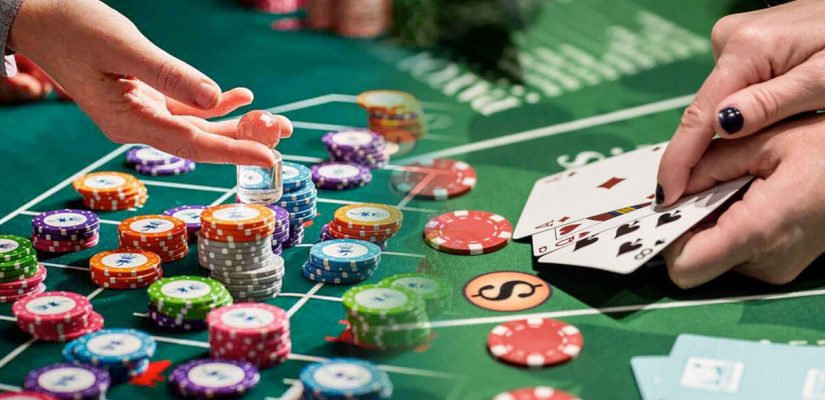
Betting systems are a losing proposition in the long run. That’s an established fact, and I won’t argue with that fact here.
Betting systems can make for some entertaining gambling sessions.
And you can sometimes win with a betting system, just like you can sometimes win without a betting system.
You’re welcome to try any of the betting systems listed below at both land-based and real money online casinos – most of them are for roulette. For some reason, roulette players love systems.
1- The Martingale System
The Martingale System is probably the best-known gambling system. It’s easy, too.
Once you’ve won, you start over with your initial bet.
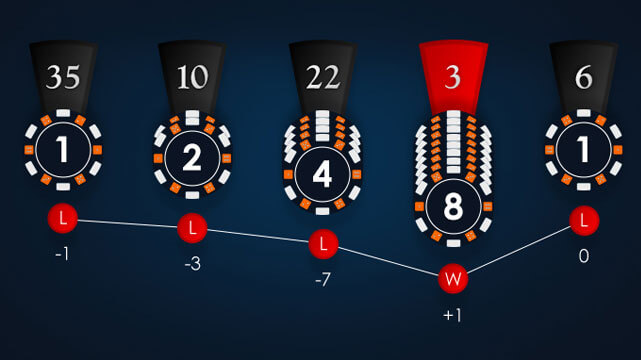
Start by betting $10 on red, for example. If you lose, bet $20 on red next time. If you lose again, bet $40.
This continues until you win – when you win, you’ve won back your previous losses and winnings the size of your initial bet.
- You’ll eventually hit a big enough losing streak that you won’t be able to place the next bet in your progression.
- You’ll either run out of money, or the size of your next wager will be larger than the table limits.
But you’ll have fun until you hit that point.
2- The Reverse Martingale
The Reverse Martingale is often also called the Paroli System. Instead of doubling your bets’ size after each loss, you’ll double the size of your wagers after each win.
The idea is to capitalize on winning streaks when they happen to win more money.
You bet $10 on red, and you win, so you bet $20 on the next spin. You win again, and now you bet $40 on the next spin. When you’ve won that, you’ve won three times in a row, so you pocket your profits and return to a $10 initial bet.
The number of times you double up your bet’s size is up to you, but most proponents of the Reverse Martingale suggest that doubling up two or three times in a row is the best way to go about this.
This is a high volatility strategy. You’ll have occasional big winning sessions, but you’ll have more losing sessions.
3- Setting a Win Goal
Setting a win goal is just a money management strategy that helps you decide when to quit a gambling session.
Proponents of money management systems like to think in terms of a percentage of your bankroll.
At each gambling session, if his chip stack gets to $140, he quits for that session.
Win goals are often combined with loss limits.
4- Having a Loss Limit
A loss limit is the reverse of a win goal, and it’s used by the same gamblers. It’s a percentage of your session bankroll that signals the end of the session once you’ve lost it.
The gambler from #3 above might have a win goal of 40% and a loss limit of 60%.
This means he’ll quit when he’s up to $140 or down to $40. (If he loses 60% of $100, he’s lost $60 and has $40 left.)
Win goals and loss limits can also be combined with other betting systems on this list. For example, a Martingale System player might also have a win goal and a loss limit.
These money management techniques can be seen as a kind of “meta” betting system.
5- The Labouchere System
The Labouchere System requires you to choose a win goal, like $100, for example. You then write down a series of amounts that add up to that win goal. For example, with a $100 win goal, you might write down the numbers $10, $20, $30, and $40.
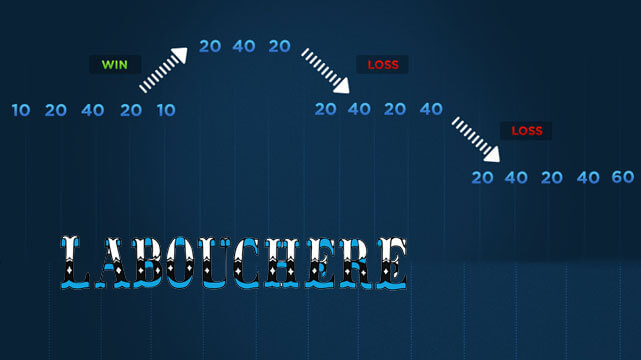
For your first bet, you add up the first and last amount on the list – in the example I’ve been using, that would be $10 + $40, or $50.
When you win that bet, you cross those amounts off your list.
If you lose, you add the amount you lost to the end of your list.
- A winner would wind up with a list looking like this after the win: $10, $20, $30, $40.
- A loser would wind up with a list looking like this after the loss: $10, $20, $30, $40, $50.
You continue like this until you’ve crossed all the numbers from your list, achieving your win goal, or running out of money.
As with the Martingale System, you’ll sometimes run into a situation where you’ll have too low a bankroll to continue. Or betting limits might end your system when the numbers get too big.
6- The Reverse Labouchere
The Reverses Labouchere works just like the Labouchere, but instead of adding a number to the end of the progression after a loss, you add that number to the end after a win.
You continue until you hit a pre-determined amount – usually the maximum bet according to the table limits.
When you lose, you cross the outside numbers off your list, which is precisely the opposite of what you’d do with the Labouchere System.
7- The D’Alembert System
The D’Alembert System is a less aggressive version of the Martingale System. You increase your stakes’ size after losing, and you decrease the size of your stakes after winning.
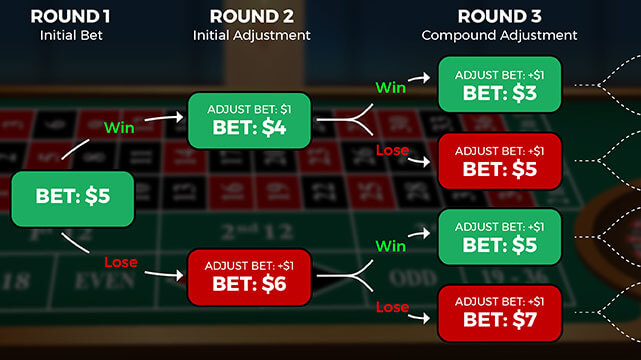
But instead of doubling the size of your bets or returning to your base amount, you increase or decrease the wagers’ size by a flat amount equal to your initial bet size.
But this time, you win, so you reduce your next bet by $10. You’re betting $20.
The amounts you bet continue to rise and fall as you play.
8- The Reverse D’Alembert
You can probably figure out how the Reverse D’Alembert System works, right?
Instead of increasing the size of your wagers after a loss, you decrease your bets’ size after a loss.
As with the D’Alembert, you decrease and increase the bets’ size based on your initial wager’s amount.
With both these systems, you’ll usually have a win goal and a loss limit.
9- The 1-3-2-6 System
The 1-3-2-6 System is best explained with an example.
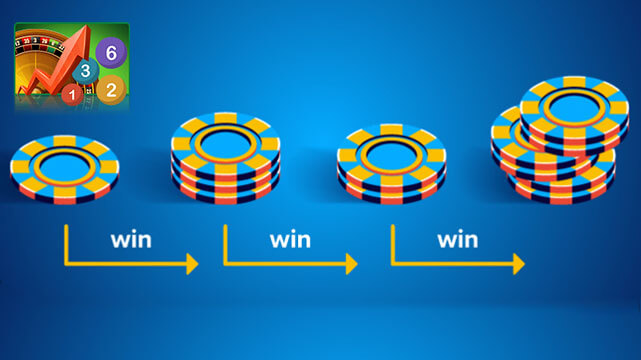
You start with a $10 bet. (That’s one unit – the “1” from the name of the system.)
- If you win that bet, you’ll bet $30 on the next bet. (That’s three units – the “3” from the name of the system.) To bet three units, you will have to wager the amount you won on the previous bet AND add a unit to the bet.
- If you win again, you’ll bet $20 on the next bet. (That’s two units – the “2” from the name of the system.) You’ll need to remove some winnings to get down to the $20 because you’ve won $40 so far.
- If you win again, you’ll bet $60, or six units. Again, to do this, you’ll need to add to the size of your bet.
Your goal is to win four bets in a row, after which, you start over again with a single-unit bet.
10- Bluejay’s Halfies System
Michael Bluejay is a brilliant and cheeky gambling writer who put together a system called “Bluejay’s Halfies System.” It doesn’t work any better than any of the other systems here, and he’ll happily admit that, but it’s still fun.
But that’s not a recipe for a weekend of fun gambling.
With the Halfies system, you gamble just like you usually would.
But at the end of your session, you bet your entire bankroll on a single final bet to try to double up.
He also offers variations, like making two big bets, each of which is the size of half your bankroll.
Or you can choose to place both bets regardless.
11- The Win a Million Dollars with a $5 Bet System
This is another system from Michael Bluejay, but it’s nothing more complicated than trying to double up enough times in a row at a table game that you win a million dollars.
It’s more of a thought experiment related to gambling math than an actual gambling system, though, because casinos always have a maximum bet size.
Still, you could use this system to try to win the maximum bet amount.
You keep doubling the size of your bet with each win until you’re finally able to make the biggest bet allowed.
How many times in a row will you have to win to pull this off?
- $5
- $10
- $20
- $40
- $80
- $160
- $320
- $500
That’s a significant winning session, and it’s far from impossible.
It’s certainly more likely than trying to win a progressive jackpot – even a small one.
12- The Fibonacci System
The Fibonacci System is the most hare-brained, superstitious system on this list.
It involves a sequence of bets where the next bet is the sum of the last two bets.
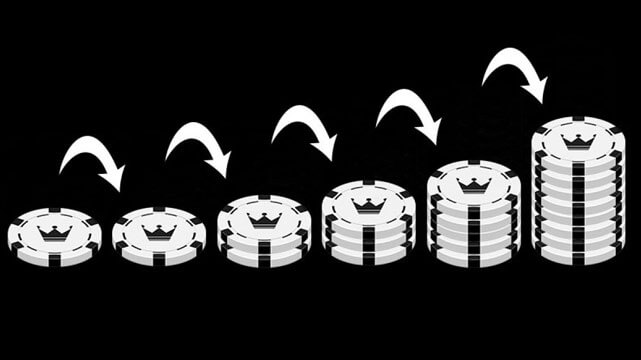
For example, your first bet would be $10.
Your next bet would also be $10, but after that, your next bet would be $20, which would be followed by a $30 bet and then a $50 bet.
13- Card Counting Systems
Card counting systems differ from most of the other betting systems in this post because counting cards works in the long run. These rest of these systems don’t.
You keep a running tally of how many high cards and how many low cards have been played so far and raise and lower the size of your bets based on this.
If the deck has a lot of 10s and aces left in it, your chances of getting a blackjack – and it’s 3 to 2 payout – increase, so you should increase the size of your bets.
Entire books have been written about card counting techniques to use when playing real money blackjack.
Suffice it to say that it’s not as hard as you think, but it still requires surprising dedication.
14- Dice Control Systems
The idea behind dice control doesn’t have to do with raising and lowering the size of your bets in a craps game.
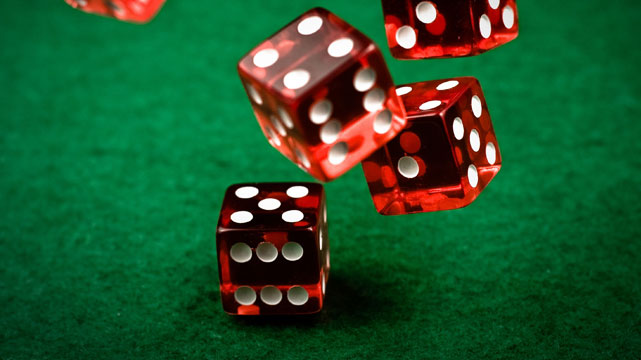
It has to do with the idea that a skilled shooter can influence a roll of the dice.
I’m skeptical, but I’ve seen some reputable, knowledgeable gambling writers who are optimistic about dice control systems.
Conclusion
But that’s not true of all of them.
One thing holds true about almost of them, though:
They don’t change the math behind the game that ensures the casino will wind up a winner.




You must be logged in to comment. Don't have an account? Sign up today.